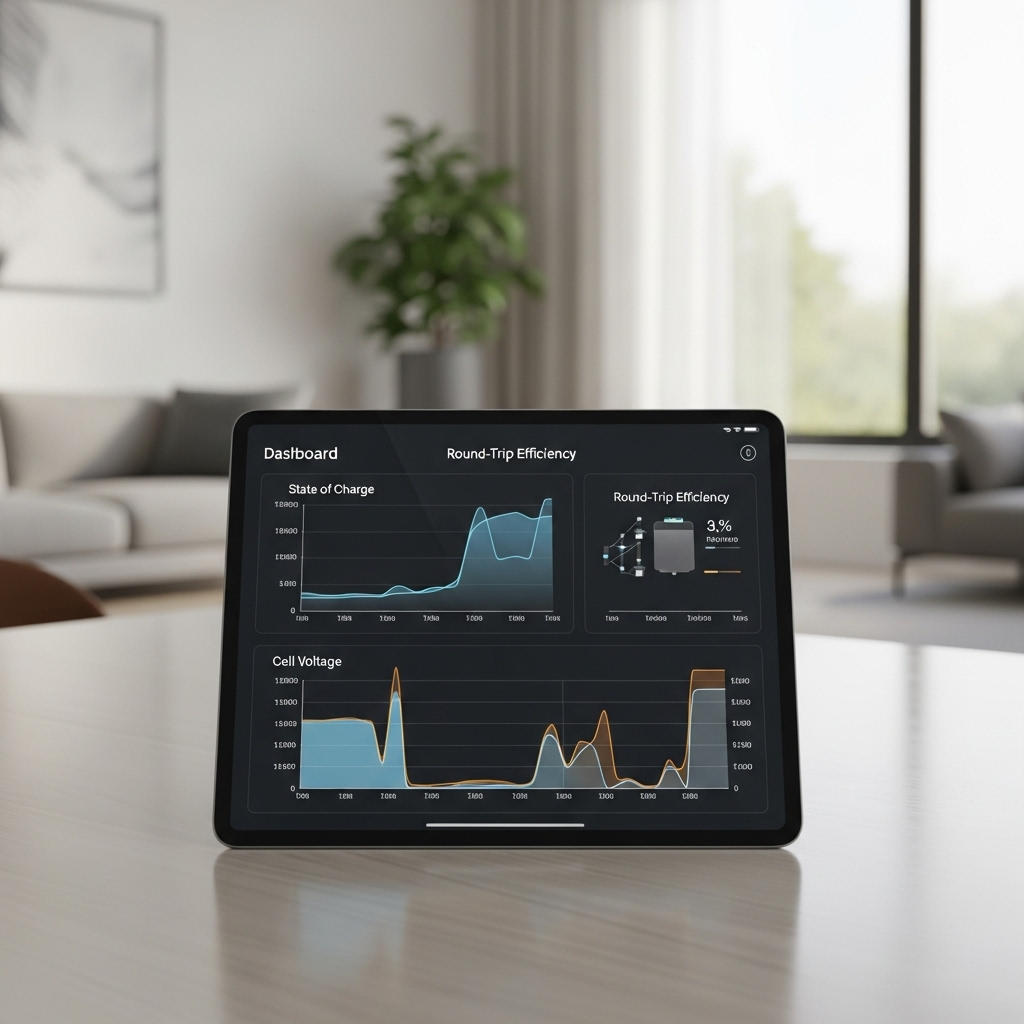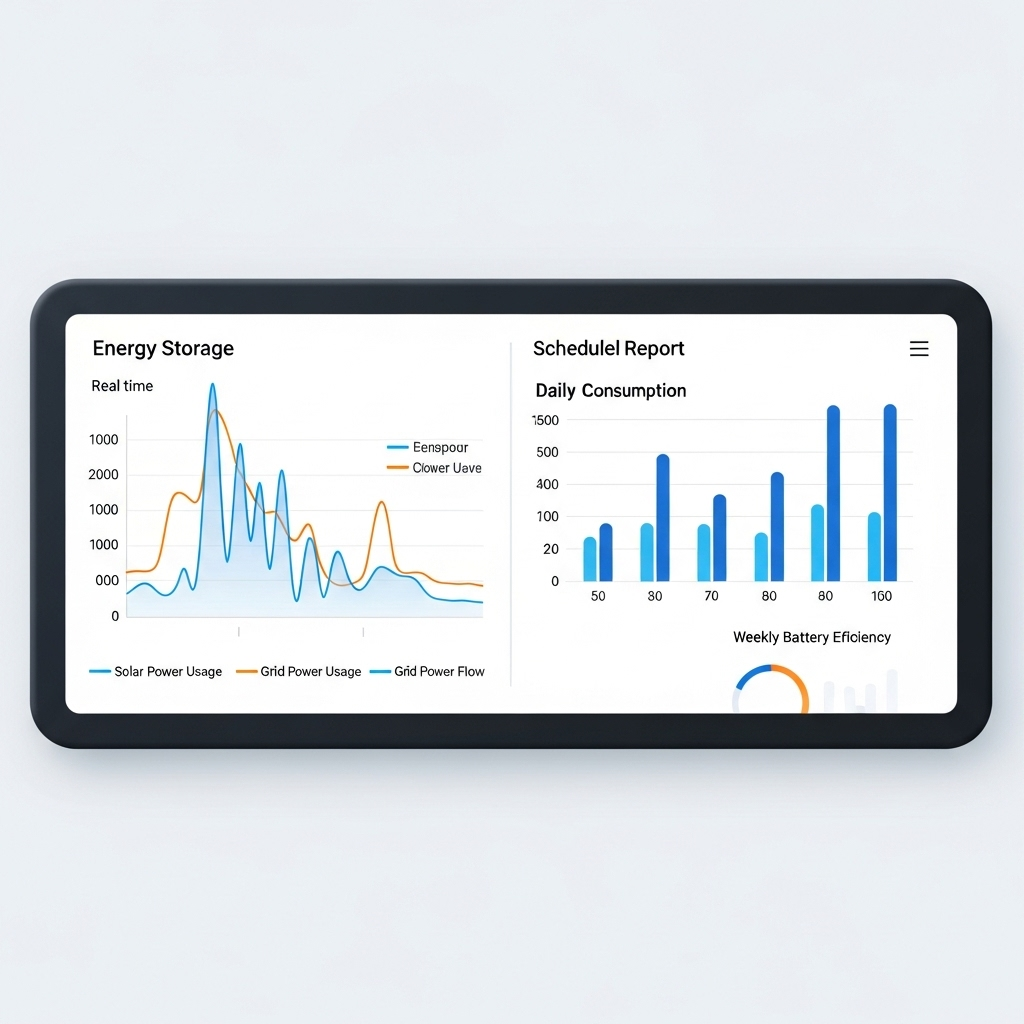The promise of a home battery system is simple: reliable power when you need it most. Yet, some owners find their backup power is less dependable than expected. A system might drain too quickly or fail to cover evening energy needs. This case study explores how one homeowner moved from frustrating unpredictability to confidence by using detailed battery analytics to optimize their home energy storage.
The Challenge: Uncovering Hidden System Inefficiencies
Imagine investing in a complete solar and battery setup, only to experience unexpected power interruptions. This was the situation for a homeowner whose system, despite being new, showed troubling signs. The battery seemed to deplete faster than its specifications suggested, and it struggled to handle the evening load, forcing a premature switch back to grid power. This scenario highlights a common issue where default monitoring tools fall short.
Initial Symptoms of an Unreliable System
The first signs of trouble were subtle. The battery's state of charge (SoC) would drop sharply with no apparent cause. During brief grid outages, the system's response was sometimes delayed. The homeowner felt they were not getting the full value or security from their investment. The basic app provided by the manufacturer showed the current power flow but offered no historical data or deeper performance metrics to diagnose the underlying problems.
Moving Beyond Basic Monitoring
Standard monitoring apps are useful for a real-time snapshot of your system. They show you if you are generating, storing, or using energy. However, they rarely provide the tools for comprehensive home battery performance monitoring. To truly understand system health and improve home backup reliability, you need to analyze trends over time. This requires a shift from passive observation to active analysis using more granular data, a practice that is becoming more accessible. As detailed in the IEA's report on the China Power System Transformation, access to detailed time-series data is fundamental to understanding and analyzing consumer energy demand.
The Solution: Implementing Advanced Battery Analytics
To solve the reliability puzzle, the homeowner adopted an analytics-driven approach. By tracking specific metrics over several weeks, a much clearer picture of the system’s behavior emerged. This allowed for targeted adjustments that addressed the root causes of the poor performance, rather than just treating the symptoms.
Key Metrics for Deeper Performance Insights
The investigation focused on metrics that reveal the 'how' and 'why' behind energy storage behavior. For a complete list of important metrics, the Ultimate Reference for Solar Storage Performance offers a detailed framework for evaluation. The following table illustrates the shift in perspective:
| Basic Metric (What's happening now) | Advanced Metric (Why it's happening) | Insight Gained |
|---|---|---|
| State of Charge (SoC) | SoC Change Over Time | Identified rapid, unexplained energy drains. |
| Current Power Flow | Round-Trip Efficiency (RTE) | Revealed significant energy loss during charge/discharge cycles. |
| System Status (On/Off) | Depth of Discharge (DoD) Patterns | Showed the battery was being discharged too deeply, causing stress. |
| Daily Solar Production | Voltage Curves Under Load | Indicated potential cell imbalances or incorrect inverter settings. |
The Tools for Effective Home Battery Performance Monitoring
Accessing this data often involves using the advanced features within a manufacturer's portal or leveraging systems with an open API to export data to a third-party dashboard. This approach mirrors trends in other energy sectors. For instance, the principles of smart management described in IRENA's Innovation Outlook: Smart charging for electric vehicles, utilize data platforms to coordinate and optimize energy use, a concept equally applicable to residential storage.
The Results: From Unreliable to Rock-Solid
Armed with data, the homeowner and their installer could finally make informed decisions. The analytics quickly pointed to several compounding issues that were crippling the system's effectiveness and threatening its long-term health.
Pinpointing the Root Causes
The investigation revealed three primary culprits. First, the Round-Trip Efficiency was a low 82%, far below the 90%+ expected from the LiFePO4 battery. This indicated that for every 10 kWh of energy stored, only 8.2 kWh was usable. Second, the Depth of Discharge frequently hit 95%, putting excessive strain on the battery. Finally, analysis of overnight energy use uncovered a 'phantom load'—an old, inefficient appliance drawing a small but constant amount of power.
Corrective Actions and Performance Gains
The following adjustments were made: the inverter's charging parameters were fine-tuned to match the battery's specific voltage and current requirements, the phantom load was identified and removed, and the family shifted some of their heavy energy use to daylight hours when solar power was abundant. The results were immediate and substantial. Round-Trip Efficiency climbed to 93%, and the average Depth of Discharge was reduced to a healthier 75%. Most importantly, the available backup time during an outage increased by nearly 40%.
The Long-Term Value of Continuous Monitoring
This case is a powerful example of proactive energy management. Continuous monitoring ensures the system remains optimized as conditions change, such as seasonal variations in solar production or changes in household energy consumption. According to an IRENA valuation framework, maximizing the value of electricity storage comes from its ability to perform multiple services, which is only possible when performance is well understood and managed.
A Smarter Approach to Energy Independence
This experience proves that achieving true home backup reliability goes beyond the initial installation. It requires an understanding of your system's performance. By leveraging battery analytics, you can move from being a passive energy consumer to an active manager of your home's power ecosystem. This proactive stance not only ensures the lights stay on during an outage but also protects your investment and extends the operational life of your battery system.
Frequently Asked Questions
What is battery analytics?
Battery analytics is the process of collecting, analyzing, and interpreting detailed performance data from a battery storage system over time. It goes beyond real-time status to identify trends, diagnose inefficiencies, and optimize the system for reliability and longevity.
How can I access advanced analytics for my battery?
Access depends on your system's manufacturer. Many modern systems include advanced monitoring dashboards in their web or mobile apps. Some also provide an API (Application Programming Interface) that allows you to export data to specialized third-party monitoring platforms for even deeper analysis.
Is it difficult to interpret battery performance data?
While some metrics can be technical, you can gain significant insights by focusing on a few key indicators. Tracking Round-Trip Efficiency, Depth of Discharge, and State of Charge trends will reveal the most critical information about your system's health and performance.
Can analytics really extend my battery’s lifespan?
Yes. By using analytics to identify and correct harmful patterns—such as consistently deep discharges, improper charging voltages, or extreme temperatures—you can significantly reduce stress on the battery's cells. This proactive management helps preserve battery capacity and contributes directly to a longer, more reliable service life.





Leave a comment
All comments are moderated before being published.
This site is protected by hCaptcha and the hCaptcha Privacy Policy and Terms of Service apply.